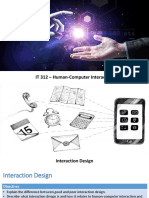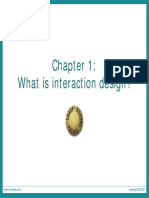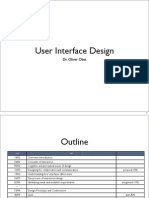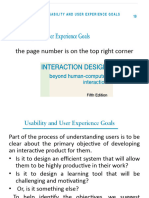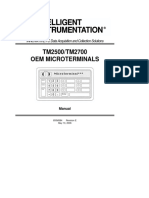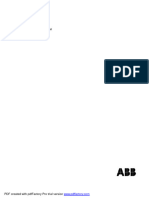0% found this document useful (0 votes)
70 views36 pages01 Introduction
Human-computer interaction and interaction design aim to create interactive products that are easy, effective and pleasurable to use. Key aspects of interaction design include usability goals like effectiveness, efficiency and learnability. User experience encompasses how users feel about a product and their satisfaction when using it. Design principles provide guidance on aspects like visibility, feedback and affordances. The goal is to understand how people interact and design products that optimize the user experience through multidisciplinary collaboration and user testing.
Uploaded by
Eng EsraaCopyright
© © All Rights Reserved
We take content rights seriously. If you suspect this is your content, claim it here.
Available Formats
Download as PDF, TXT or read online on Scribd
0% found this document useful (0 votes)
70 views36 pages01 Introduction
Human-computer interaction and interaction design aim to create interactive products that are easy, effective and pleasurable to use. Key aspects of interaction design include usability goals like effectiveness, efficiency and learnability. User experience encompasses how users feel about a product and their satisfaction when using it. Design principles provide guidance on aspects like visibility, feedback and affordances. The goal is to understand how people interact and design products that optimize the user experience through multidisciplinary collaboration and user testing.
Uploaded by
Eng EsraaCopyright
© © All Rights Reserved
We take content rights seriously. If you suspect this is your content, claim it here.
Available Formats
Download as PDF, TXT or read online on Scribd
/ 36












